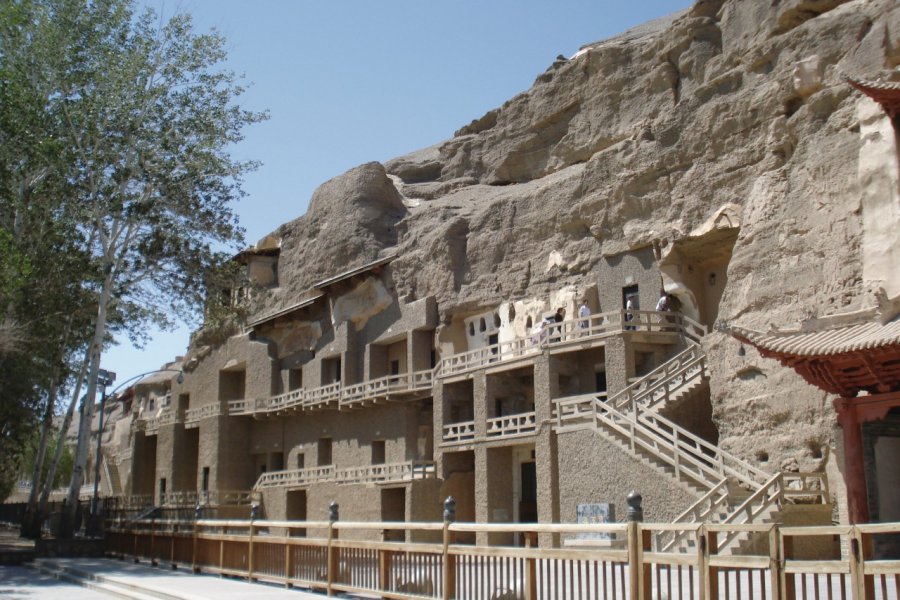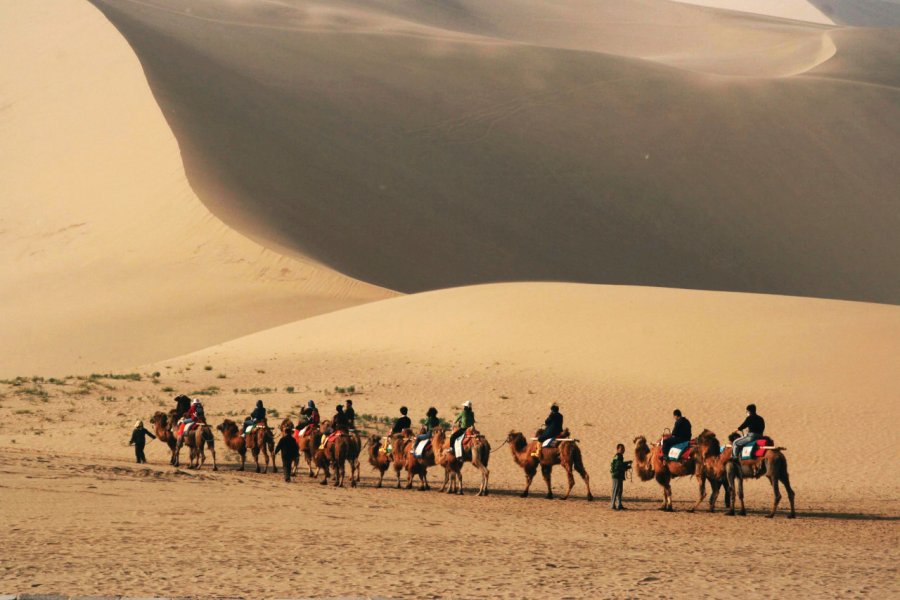Travel Guide Dunhuang 敦煌
Find an accommodation
Advertising
In the first century of our era, the Chinese established a military position in Dunhuang at the entrance to the Désert desert, near the Jade Gate, which once marked the extreme limit of the former Middle Empire. Here, the silk road was divided into two branches to bypass the Désert desert by the north and the south, before converging towards the Roman world of the Mediterranean. During the Han and Tang dynasties, Dunhuang develops and becomes an important caravan centre.The monastery of Mogao, founded in 353, was a great Buddhist sanctuary that continued to expand until the th century. From 1036, the conquest of the region by the Tangut freine the activity of artistic and monastic life in Dunhuang. It was at this time that sont in a cell murée nearly 50 000 Buddhist manuscripts and paintings of great value.Thereafter, the caves of Mogao are gradually abandoned, half buried by the sands, but preserved by the dry desert climate. Manuscripts remained in oblivion until 1899, when a monk named Wang Yuan elected home in one of the caves of Mogao. He then discovers the treasure of the murée cell. A true library without price, filled with manuscripts, silk paintings and hemp canvas, probably the oldest printed book dating from 868.A few years later, in 1905, the monk sells a few manuscripts to a Hungarian geologist, Oubrachev, who passes through Dunhuang. This is how Sir Aurel Stein, an officer of the British administration in India, learns the existence of this fabulous treasure. Leading an archaeological mission, he was present in 1907, succeeded in winning the confidence of the monk and eventually carried several dozen manuscripts of manuscripts that were deposited at the British Museum in London.One year later, the renowned Paul Pelliot, in turn, bought others for a derisory price, thanks to his knowledge of the Chinese language. Then an Italian and a Russian…Finally, an American art lover, in the name of safeguarding this precious heritage, takes dozens of murals and statues to shelter them in his museum.One understands why the Chinese keep a bad memory of those foreign specialists who succeeded on the site and ask to recover the manuscripts of Dunhuang. Today, caves are protected. Important safeguard work has been undertaken, and a Chinese research institute is now ensuring conservation.
What to visit Dunhuang 敦煌?
Suggested addresses Dunhuang 敦煌
Weather at the moment
Advertising
Organize your trip with our partners Dunhuang 敦煌
Transportation
Book your plane tickets
Car Rental
Boat rental
Accommodation & stays
Find a hotel
Holiday rental
Find your campsite
Tailor-made trip
Immersion travel
Services / On site
Activities & visits
Find a doctor













